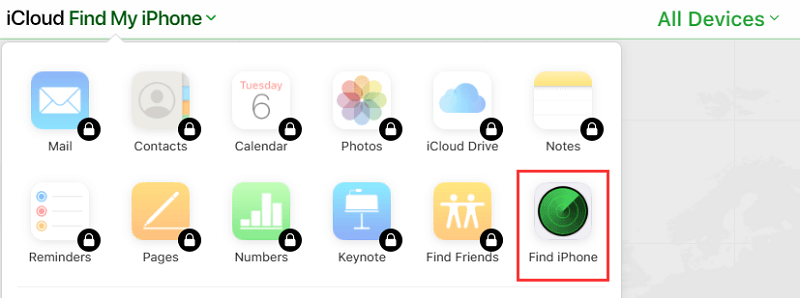
Apple blocks using for Find My iPhone from an iOS device, for no reason I can determine. Once active, you can locate a device from the Find My iPhone app in iOS, or on any other platform. The iCloud system preference pane enables Find My Mac.
#How to use mac to find iphone password
If not, check its box and enter your iCloud password when prompted. In macOS, open the iCloud system preference pane and make sure Find My Mac is checked at the bottom. You’ll find an option there as well to send the last location of an iPhone or iPad when the device’s battery is nearly dead. The Find My iPhone item will show On or Off next to it, and you can tap it to drill down into settings to enable it when it’s off. You can check whether it’s enabled in iOS by visiting Settings > iCloud. You can opt in iOS to let your phone or tablet send its last position before its battery poops out. But you may have skipped that step, or later turned the feature off to erase and restore a device. You receive a notification once it’s located.Apple encourages enabling Find My iPhone in iOS and Find My Mac in macOS when you set them up or when performing a major upgrade, like moving from iOS 9 to 10. If you want to be notified when the location is available, click the Info button on the map, then select 'Notify When Found'. If you can't find the device on the map, below the device’s name, 'No location found' appears. If there’s a blue circle around the device, the location is approximate. An updated location and timestamp appear under the device’s name. To find another device from the list, click on it and see its location on the map. From there, you can perform various tasks, including locking the device, playing a sound, and more. Click on the 'i' next to the device's name on the map. Choose your device on the list on the left side of the app. To customize the settings for your Mac, go into the 'Find My' app on the dock or from the 'Applications' folder. Each device tied to your Apple ID will show up in the 'Find My' app. Regardless, you've already done this using the steps above. Devicesĭuring the setup process across your Apple devices, you're asked whether to share its location to help you locate and protect it if it’s ever lost or stolen. From there, you can perform various tasks, including receiving directions, creating a notification, adding the contact to favorites, removing the contact from location sharing, and more. Click on the 'i' next to the person's name on the map. To find someone's location on Mac, open the 'Find My' app, then select the 'People' tab. As you accept those requests, you'll see their names pop up under the 'People' tab in the 'Find My' app across your Apple devices.

In turn, you'll receive sharing requests from other users. If you only have a Mac, you can’t share your location. You can share your location from your Mac if you have an iPhone, iPad, or iPod touch signed in with the same Apple ID. Click 'Send', followed by how long you wish to share your location. Select the '+' button to see all of your contacts. As you type, Find My suggests matching addresses from the 'Contacts' app or from people you’ve previously shared your location with.

Type a name, an email address, or a phone number in the To field. Choose yourself on the list, then click 'Share My Location' at the bottom left. To share your location, click on the 'Find My' app on the dock or from the 'Applications' folder.

With notifications, you can also receive alerts whenever a person leaves or arrives at a set location. Once shared, you can see the exact location of a person's device on a map and find directions to their location. With Find My, users can share their GPS locations on a temporary or indefinite basis.


 0 kommentar(er)
0 kommentar(er)
